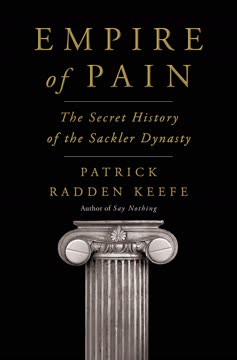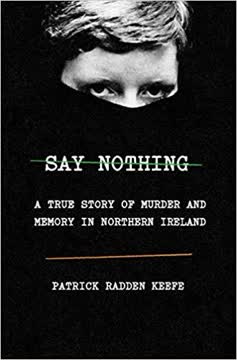Key Takeaways
1. Arthur Sackler's Marketing Revolution Blurred Ethics
亚瑟就像是发明了轮子。
Pioneering medical advertising. Arthur Sackler, the family patriarch, revolutionized pharmaceutical marketing in the mid-20th century, transforming it from a staid business into a sophisticated, aggressive industry. He applied consumer advertising techniques—catchy slogans, compelling visuals, and direct appeals—to prescription drugs, effectively creating the "broad spectrum" antibiotic concept for Pfizer's Terramycin. His agency, William Douglas McAdams, became a powerhouse, and he secretly owned a rival firm, L.W. Frohlich, creating a hidden empire.
Blurring lines. Arthur skillfully blurred the lines between medical education and commercial promotion. He founded medical journals like Medical Tribune, which often published articles favorable to his clients' drugs and were heavily funded by pharmaceutical ads. He believed doctors were immune to advertising's influence, yet his strategies were designed to sway their prescribing habits. This approach set a dangerous precedent for future pharmaceutical marketing, prioritizing sales over strict scientific objectivity.
A complex legacy. Arthur's ambition extended beyond business; he was a prolific art collector and philanthropist, donating millions to cultural institutions. He saw himself as a polymath, bridging art, science, and commerce. However, his methods, including tax-advantaged donations and a preference for anonymity in business while seeking public recognition for philanthropy, laid the ethical groundwork for his family's later ventures, demonstrating how immense wealth could be accumulated and then "laundered" through public benevolence.
2. The Tranquilizer Gold Rush Paved the Way
烦宁有个了不起的特点,就是几乎各种专科都能用上它。
The "Age of Anxiety" drug. The Sacklers' early success with tranquilizers like Librium and Valium, marketed by Arthur's agency, demonstrated the immense profitability of drugs that addressed common psychological distress. Librium, launched in 1960, was promoted as a panacea for "the Age of Anxiety," quickly becoming a blockbuster. Valium, introduced shortly after, was differentiated through clever marketing to treat "psychic tension" and muscle spasms, despite being chemically similar.
Aggressive marketing tactics. Arthur's team employed innovative, often deceptive, marketing to push these drugs. They circumvented FDA rules against direct-to-consumer advertising by placing articles in popular magazines (like Life's "New Way to Calm a Cat") and flooding doctors' offices with promotional materials, free samples, and paid speakers. They targeted women, portraying tranquilizers as a solution for the stresses of modern life, from college pressure to menopause.
Downplaying addiction risks. Despite growing evidence of addiction, Purdue and its marketing partners, under Arthur's guidance, consistently downplayed the risks of Librium and Valium. They argued that addiction was a "psychological disease" of "addictive personalities," not an inherent property of the drugs. This narrative, which shifted blame from the drug to the user, became a template for future Sackler ventures, allowing them to profit immensely while externalizing the human cost.
3. Purdue's Pivot to Pain: A Lucrative, Risky Shift
疼痛是在病患身上最常见的症状。
From laxatives to opioids. Purdue Frederick, initially a small company selling mundane products like laxatives (Senokot) and antiseptics (Betadine), was transformed under Raymond and his son Richard Sackler. Their acquisition of Napp Pharmaceuticals in the UK led to the development of MS Contin, a slow-release morphine pill. This marked a strategic pivot towards pain management, a market they believed was underserved and ripe for expansion.
Challenging "opiophobia." Richard Sackler championed a new philosophy in pain management, arguing that doctors were overly cautious ("opiophobic") about prescribing opioids due to exaggerated fears of addiction. He believed that chronic pain was a widespread, undertreated epidemic, and opioids were "nature's gift" to alleviate suffering. This narrative, supported by paid pain specialists, aimed to destigmatize opioids and encourage their broader use.
MS Contin's success. MS Contin, launched in the US in 1984 without full FDA approval (a loophole exploited by Purdue's legal team), became a significant success. Its controlled-release mechanism allowed for less frequent dosing, making it convenient for patients, particularly those with cancer pain. This success validated Richard's vision and set the stage for the development of an even more potent and profitable opioid: OxyContin.
4. OxyContin's Deceptive Launch Fueled Addiction
疼始康定药锭是公司歷史上最重要的市售产品。
A blockbuster vision. Richard Sackler spearheaded the development and launch of OxyContin in 1996, envisioning it as Purdue's next blockbuster drug. He was intimately involved in every detail, from R&D to marketing. OxyContin contained oxycodone, an opioid twice as potent as morphine, delivered in a controlled-release formula. The company's internal goal was to expand its use beyond cancer pain to the much larger market of chronic non-cancer pain.
False claims of low addiction. Purdue's marketing strategy hinged on the deceptive claim that OxyContin's controlled-release mechanism made it less addictive than other opioids, with an addiction rate of "less than 1%." This claim, based on a single, five-sentence letter to the New England Journal of Medicine (not a peer-reviewed study), was aggressively promoted by sales reps and paid "pain ambassadors." The FDA, under Curtis Wright (who later joined Purdue), approved a label that ambiguously stated the controlled-release "is believed to reduce the abuse liability."
Aggressive sales tactics. Purdue deployed a massive sales force, incentivized by lucrative bonuses, to target general practitioners who had little experience with strong opioids. They provided free samples, sponsored lavish "pain management" seminars in resort locations, and distributed branded merchandise. The goal was to encourage doctors to prescribe OxyContin "early and often," and to "titrate patients up" to higher, more profitable doses, even for moderate pain.
5. Denial and Blame-Shifting Amidst a Growing Crisis
滥用者并不是受害者,他们是加害者才对。
Ignoring early warnings. Almost immediately after its launch, reports of OxyContin abuse and addiction began to surface, particularly in rural and Appalachian communities. Users discovered that crushing the pills bypassed the controlled-release mechanism, delivering a powerful, immediate high. Purdue's sales reps documented these issues in their call notes, and internal memos revealed the company's awareness of widespread abuse, including snorting and injecting the drug.
Blaming the victim. Despite mounting evidence, Richard Sackler and Purdue's leadership, including legal counsel Howard Udell and marketing head Michael Friedman, vehemently denied any responsibility. They consistently blamed "addicts" and "criminals" for misusing the drug, portraying them as "scum" and "perpetrators" rather than victims. This narrative was pushed publicly and internally, with Udell even developing an "auto-delete" email system to erase old communications.
Suppressing dissent. Purdue actively worked to suppress negative information and criticism. They pressured journalists, threatened lawsuits, and used their influence to discredit those who raised concerns. When a New York Times reporter, Barry Meier, began investigating, Purdue's executives tried to have his reporting stopped, and later, after his book Pain Killer was published, successfully lobbied The New York Times to remove him from covering the opioid crisis, citing a conflict of interest.
6. Legal Battles and Strategic Settlements Shielded Family Wealth
普度公司及其高阶主管已被绳之以法了。
The 2007 federal plea. Facing a federal criminal investigation in Virginia, Purdue Pharma and three top executives (Michael Friedman, Paul Goldenheim, and Howard Udell) reached a plea agreement in 2007. Purdue Frederick (the original, smaller entity) pleaded guilty to a felony charge of misbranding OxyContin, paying a $600 million fine. The three executives pleaded guilty to misdemeanor misbranding charges, receiving probation and community service, but no jail time.
Shielding the Sacklers. Crucially, no Sackler family members were charged, and their names were largely absent from public discourse surrounding the plea. The family had strategically structured their empire with multiple entities, allowing Purdue Frederick to take the fall while Purdue Pharma (the more profitable entity) continued operations. The executives, in turn, were handsomely compensated by the Sacklers for their "sacrifice," receiving millions in bonuses.
Sealing the evidence. A key component of Purdue's legal strategy was to settle lawsuits out of court and demand that all incriminating documents, including deposition transcripts and internal memos, be sealed from public view. This practice, replicated across thousands of lawsuits, effectively buried evidence of the Sacklers' direct involvement and knowledge of OxyContin's dangers, allowing them to maintain a benevolent public image while the crisis raged.
7. "Evergreening" and Global Opioid Expansion
普度应该是这类研究的领头羊,怎么会是我们在追赶其他公司的脚步呢?
Patent cliff and reformulation. As OxyContin's original patent approached expiration, Purdue faced the "patent cliff"—a drastic drop in revenue due to generic competition. To counter this, they developed a new, "abuse-deterrent" formulation (OxyContin OP) in 2010. This reformulation, while making the pills harder to crush or inject, did not prevent oral abuse and was later found to increase overall overdose rates by driving users to cheaper, more potent street drugs like heroin and fentanyl.
FDA's controversial approval. The FDA not only approved OxyContin OP but also took the unprecedented step of declaring the original formulation unsafe and blocking generic versions. This decision, heavily influenced by Purdue's lobbying, effectively granted Purdue a new period of market exclusivity, extending their monopoly and profits. The FDA's claim that the new formulation "is believed to reduce the abuse liability" was based on limited evidence.
Mundipharma's global push. With the US market becoming saturated and litigious, the Sacklers shifted their aggressive marketing tactics to international markets through Mundipharma, their privately held global network. They targeted countries in Latin America and Asia, using the same deceptive strategies—downplaying addiction, promoting opioids for non-cancer pain, and employing "pain ambassadors"—that had fueled the crisis in the US. Raman Singh, Mundipharma's Asia CEO, openly boasted about "commercializing pain" and aimed for China to surpass the US as their primary market.
8. Philanthropy as a Veil for Controversial Riches
萨克勒这个姓氏受到推崇,象徵善行和资本体制的成果。
A name everywhere. The Sackler family cultivated an image of unparalleled generosity, donating hundreds of millions to prestigious cultural and educational institutions worldwide. Their name adorned wings at the Metropolitan Museum of Art, the Louvre, Harvard, Yale, Oxford, and numerous other universities and museums. This extensive philanthropy served to burnish their reputation, creating a stark contrast between their public image and the growing controversy surrounding their pharmaceutical business.
The "noble name" paradox. Arthur Sackler, in particular, emphasized the importance of a "noble name" and believed that philanthropy offered "the possibility of immortality." The family's donations often came with strict naming rights clauses, ensuring their surname was prominently displayed. This created a paradox: a family whose wealth was increasingly linked to a public health catastrophe was simultaneously celebrated as benefactors of art and science, effectively using philanthropy to "wash the blood off the money."
Obscuring the source of wealth. The Sacklers meticulously guarded the source of their wealth, rarely discussing Purdue Pharma publicly. Their financial structures, involving a labyrinth of trusts and shell corporations in tax havens like Bermuda, further obscured the connection between their philanthropic endeavors and the profits from OxyContin. This deliberate opacity allowed them to enjoy the social prestige of their donations without facing scrutiny over their business practices.
9. Activism Forced Institutions to Confront Sackler Legacy
萨克勒家族说谎!成千上万人死亡!撤下他们的姓氏!
Nan Goldin's personal crusade. The artist Nan Goldin, a recovered OxyContin addict, became a powerful voice against the Sacklers. Having experienced the devastating effects of the drug firsthand, she launched the activist group PAIN (Prescription Addiction Intervention Now) and organized highly visible protests at Sackler-named institutions. Her activism, rooted in her personal story and artistic integrity, brought unprecedented public pressure on these cultural bastions.
The "de-naming" movement. Goldin's protests, often involving "die-ins" and the symbolic throwing of empty pill bottles into museum fountains, forced institutions to confront the ethical implications of accepting Sackler money. The movement gained momentum, leading to a wave of "de-naming" decisions. The Louvre was the first major institution to remove the Sackler name, followed by the National Portrait Gallery, Tate Modern, Guggenheim, and eventually the Metropolitan Museum of Art and Tufts University.
A shift in public perception. The activism successfully shifted public perception of the Sackler name from one of benevolence to one inextricably linked to the opioid crisis. While many institutions initially resisted, citing contractual obligations or the need to honor past donations, the sustained pressure and moral outrage ultimately proved too powerful to ignore. This marked a significant victory for accountability and a re-evaluation of the ethics of philanthropic funding.
10. Bankruptcy Shielded Billions, Not Accountability
萨克勒家族非常成功地吸光普度的精气,年复一年,月复一月,他们让数亿美元流出公司。
Strategic bankruptcy. In 2019, facing thousands of lawsuits from states, cities, and counties, Purdue Pharma filed for Chapter 11 bankruptcy. This was a strategic move, orchestrated by the Sacklers, to consolidate the litigation and negotiate a global settlement that would protect the family's remaining wealth and shield them from future liability. The family had already extracted billions from Purdue, leaving the company with limited assets.
Controversial settlement proposal. The Sacklers proposed a settlement that would convert Purdue into a public benefit trust, with future profits (from continued opioid sales) going to address the crisis. They offered an additional $3 billion from their personal fortune, contingent on the sale of their international Mundipharma assets. Crucially, this deal demanded broad legal immunity for the family from all future opioid-related lawsuits, without admitting any wrongdoing.
Outrage and ongoing legal battles. Many state attorneys general, particularly from "blue states" like Massachusetts and New York, vehemently rejected the proposal, calling it an "insult" and a "sham." They argued that the Sacklers had siphoned billions from Purdue, leaving little for victims, and were now trying to buy immunity. Investigations revealed the family had transferred over $10 billion out of Purdue since 2007. The bankruptcy proceedings became a battleground, with victims and prosecutors fighting to hold the Sacklers personally accountable and prevent them from escaping justice.
Last updated:
Review Summary
Empire of Pain is a meticulously researched and engrossing account of the Sackler family's role in the opioid crisis. Keefe expertly chronicles three generations of Sacklers, from their humble beginnings to their rise as pharmaceutical tycoons. The book exposes the family's aggressive marketing of OxyContin and their denial of its addictive properties. Readers are captivated by Keefe's storytelling, which reads like a thriller while uncovering the devastating impact of corporate greed. Many reviewers praise the book's thorough investigation and its ability to provoke anger and disbelief at the Sacklers' actions.
Similar Books


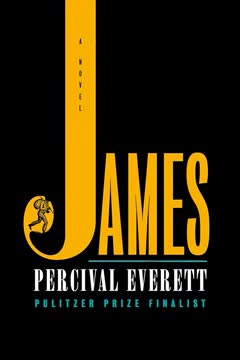
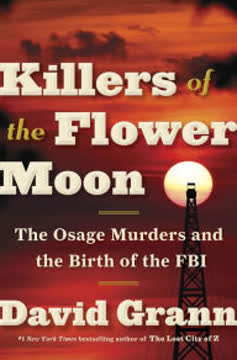

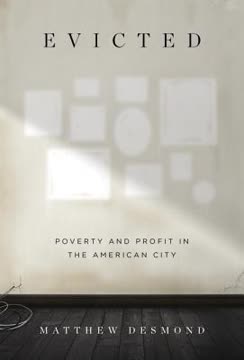
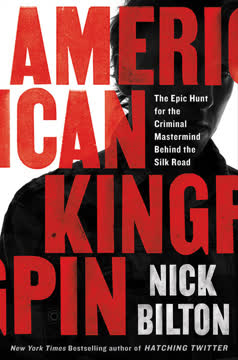
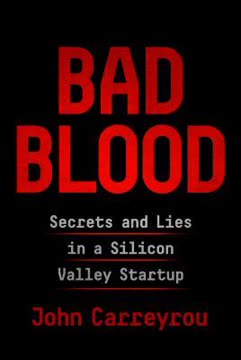
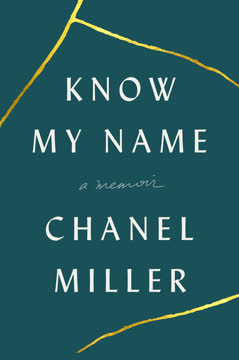

Download PDF
Download EPUB
.epub digital book format is ideal for reading ebooks on phones, tablets, and e-readers.
